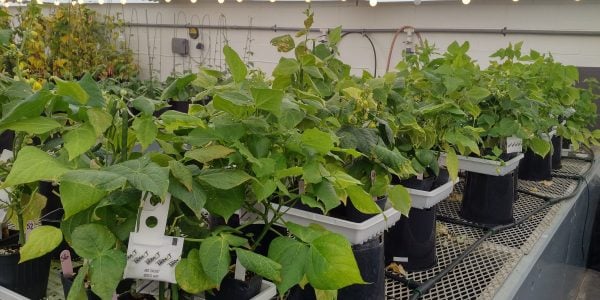Food bean breeders have a lot to check when developing a new variety. From yield and maturity to considerations of quality and end-use markets, breeders need to develop varieties that perform well in the field and delight the palate when they arrive at the table.
About this episode RealAgriculture’s Edible Bean School, Paul Cornwell, Seed and Research Manager at Hensall Co-op, considers what it takes to bring new edible varieties to market. How breeders work to balance the needs of producers and end users. And new varieties are expected to emerge from the research pipeline in the near future.
How long does it take to develop a new edible bean and bring it to market? Cornwell says the process typically takes eight to 10 years. He notes that growers can expect to see two new varieties of Hensall’s white beans in 2025: ‘Blast’ and ‘Steam’. The two varieties were hybridized in a greenhouse at the University of Guelph in 2015, and seeds will be grown in Idaho starting in 2022. A full commercial release is planned. It will happen in 2026.
From a grower’s perspective, breeders should always prioritize yield and maturity. “Growers always choose high-yielding, early-maturing varieties over later-maturing varieties,” says Cornwell. “Late-maturing varieties begin to compete with soybeans for harvest time, and harvest conditions typically worsen as the fall progresses.” (Story continues after video.)
Cornwell also looks at the importance of disease resistance and the time and effort it takes to develop beans with strong defenses. “Traits like disease resistance are linked to genes,” Cornwell points out. “Incorporating new traits and genes into elite varieties takes time because breeders are working with crosses between plants, which can take up to five generations of observation.”
Once genetic markers have been identified, DNA testing can be used to speed up the process. For example, common bacterial blight and kidney bean mesaic virus are associated with well-defined markers. But perennial problems like white mold are more complex, Cornwell said, because no real resistance has been identified. When it comes to white mold, breeders are looking at plant structure, such as upright varieties that encourage airflow through the canopy, to help manage the disease.
Unlike some crops where yield is the only important factor, edible beans have a lot of quality parameters that end users want, such as seed size and color, Cornwell noted. If a new variety doesn’t fit into an established market class, it can’t be grown.
“Even if it looks similar to an existing variety, cooking method is also important. Ultimately all edible beans need to be cooked, so the new variety needs to cook as expected, whether that’s how the consumer cooks the beans or opens a can,” Cornwell emphasizes.
Tap here Click here for more Edible Bean School videos.
subscribe: Apple Podcasts | Spotify | | all podcasts







